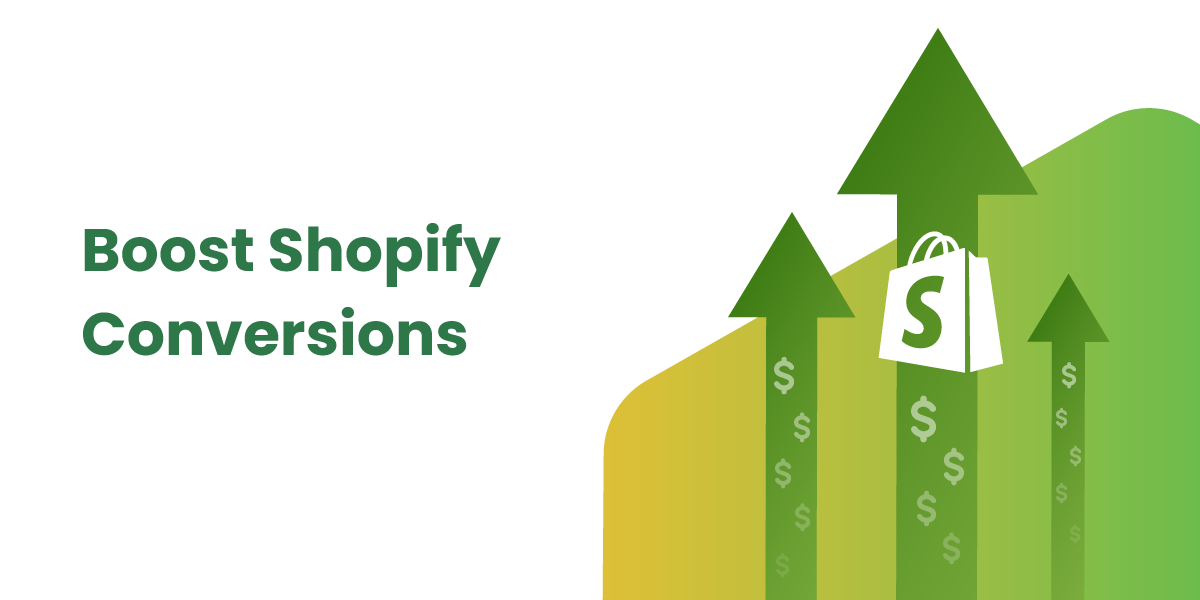The Secret to Boosting Your Shopify Conversion Rates in 3 Easy Steps
Are you a proud owner of a Shopify store, disheartened by low conversion rates? Then you are in the right place. This article unveils a trio of tried-and-tested strategies to skyrocket your Shopify conversion rates. Sit back and immerse yourself in the wealth of important insights and practical tips that follow.
Understanding Shopify Conversion Rates
Before we dive into the strategies to boost your Shopify conversion rates, let’s ensure that we are on the same page about what conversion rates are and why they matter to your Shopify store.
Conversion rates are a key metric for any ecommerce business. They measure the percentage of visitors to your online store who complete a desired action, such as making a purchase, subscribing to your newsletter, filling out a form, or downloading a resource. These actions are crucial for the success of your business, as they directly contribute to your revenue and customer engagement.
Calculating your conversion rate is relatively straightforward. It involves dividing the number of conversions by the total number of visitors and then multiplying the result by 100. For example, if your Shopify store has 100 visitors and 20 of them make a purchase, your conversion rate is 20%.
Why Is Conversion Rate Important for Your Shopify Store?
Conversion rates play a vital role in gauging the effectiveness of your ecommerce strategy. They provide valuable insights into how well your website and marketing efforts are performing in terms of converting visitors into customers. A high conversion rate indicates that you are successfully persuading a significant portion of your audience to take the desired action, resulting in increased sales and revenue.
A low conversion rate can be a cause for concern. It suggests that despite attracting a healthy amount of traffic to your Shopify store, you're failing to convince them to complete the desired action. This could be due to various factors, such as unclear messaging, a complicated checkout process, or a lack of trust signals on your website.
Boosting your Shopify conversion rate is essential for the growth and profitability of your business. By optimizing your website, improving your product descriptions, streamlining the checkout process, and implementing effective marketing strategies, you can increase the percentage of visitors who convert into paying customers. This means that you can maximize your revenue without having to solely rely on attracting additional traffic.
Conversion rates are a fundamental metric for any Shopify store. They provide valuable insights into the effectiveness of your ecommerce strategy and help you identify areas for improvement. By continuously monitoring and optimizing your conversion rate, you can drive more sales, increase customer engagement, and ultimately achieve long-term success in the competitive world of ecommerce.
Optimizing Your Shopify Store Design
Now that we have highlighted the importance of conversion rates, let's move on to the first step towards fueling them—optimizing your store design.
When it comes to running a successful Shopify store, one of the key factors that can make or break your conversion rates is the design of your website. Your store isn't just a digital retail platform; it's an experience you offer to every visitor. An intuitive and engaging design reduces bounce rates and encourages users to stay longer, thereby significantly upping the odds of conversions.
So, how can you optimize your store design to create a user-friendly experience that boosts conversions? Here are a few tips to get you started:
Importance of a User-Friendly Design
A user-friendly design can make or break your Shopify store's conversion rates. Remember, your store isn't just a digital retail platform; it's an experience you offer to every visitor. An intuitive and engaging design reduces bounce rates and encourages users to stay longer, thereby significantly upping the odds of conversions.
When visitors land on your website, they should immediately feel comfortable and confident in navigating through your products and making a purchase. A cluttered or confusing design can quickly turn them away and send them searching for a competitor's site.
On the other hand, a well-designed and user-friendly website creates a positive first impression and builds trust with your potential customers. It shows that you care about their experience and are committed to providing them with a seamless shopping journey.
Tips for Design Optimization
Design optimization encompasses several aspects. Focus on creating a responsive design that provides a seamless experience irrespective of the device your users prefer. Ensure fast loading speeds to minimize drop-offs and enhance search engine ranking. Easy navigation with well-categorized products fosters an engaging shopping experience.
When it comes to responsive design, it's essential to ensure that your website looks and functions flawlessly on all devices, including desktops, laptops, tablets, and smartphones. With the increasing use of mobile devices for online shopping, having a mobile-friendly design is no longer optional—it's a necessity.
In addition to responsiveness, the speed at which your website loads also plays a crucial role in conversion rates. Studies have shown that even a one-second delay in page load time can lead to a significant increase in bounce rates. Therefore, optimizing your website's loading speed is vital to keep your potential customers engaged and prevent them from abandoning their shopping carts.
Furthermore, easy navigation is key to providing an enjoyable shopping experience. Ensure that your products are well-categorized and easy to find. Implement filters and search functions to help users quickly locate the specific items they are looking for. The easier it is for customers to find what they need, the more likely they are to make a purchase.
The design isn't confined to the visual elements alone. It extends to the checkout process too. A complicated checkout process can deter even the most eager buyers. Keep your checkout process simple and streamlined to seal the deal without losing the potential client.
Make sure that the checkout process is as straightforward as possible, with minimal steps and clear instructions. Offer multiple payment options to cater to different customer preferences, and provide reassurance by displaying trust badges and security seals to instill confidence in your customers.
By optimizing your Shopify store's design, you can create a user-friendly experience that not only keeps visitors engaged but also increases the likelihood of conversions. Take the time to analyze your current design and implement the necessary changes to ensure that your store is visually appealing, easy to navigate, and optimized for conversion.
Enhancing Your Product Descriptions
The next strategy to boost your Shopify conversion rate revolves around product descriptions.
Product descriptions are not just a mundane part of your online store; they play a vital role in converting potential customers into loyal buyers. A well-crafted product description goes beyond merely providing information; it captivates the reader, answers their pressing questions, dispels any doubts they may have, highlights the product's unique selling points, and ultimately, persuades visitors to hit the "buy" button.
The Role of Product Descriptions in Conversion
Gripping product descriptions play a crucial part in the decision-making process of potential customers. When someone visits your online store, they are looking for more than just a list of features and specifications. They want to know how the product will benefit them, how it will make their life easier or more enjoyable.
Imagine you are selling a fitness tracker. Instead of simply stating that it tracks steps, heart rate, and calories burned, you could describe how it empowers the user to take control of their health and fitness journey. Paint a picture of someone confidently reaching their fitness goals, thanks to the guidance and insights provided by the tracker. By doing so, you are not just selling a product; you are selling a solution to a problem and a better version of themselves.
How to Write Effective Product Descriptions
Writing compelling product descriptions is both an art and a science. It requires a deep understanding of your target audience and the ability to communicate the value of your product effectively. Here are some tips to help you write product descriptions that convert:
- Know your target audience: Before you start writing, take the time to understand who your ideal customer is. What are their pain points? What are their aspirations? Tailor your product descriptions to resonate with their desires and needs.
- Weave an engaging narrative: Don't just list the features of your product; tell a story. Create a narrative that captures the imagination of your audience and makes them envision themselves using and benefiting from the product.
- Use persuasive language: Choose your words carefully. Use language that speaks directly to your target audience, using words and phrases that resonate with them. Highlight the benefits and outcomes they can expect from using your product.
- Break it down: People tend to skim through online content, so make your product descriptions easy to digest. Break up blocks of text into easily noticeable bullet points or short paragraphs. This enhances readability and allows visitors to quickly grasp the key points.
- Optimize for search engines: While it's important to incorporate relevant keywords in your product descriptions to aid search engine visibility, remember that your ultimate aim is to persuade the reader to make a purchase. Focus on creating descriptions that are more about the customer than they are about the product.
By following these guidelines, you can transform your product descriptions into persuasive sales tools that drive conversions and boost your Shopify store's success.
Implementing a Strong Call-to-Action (CTA)
The third technique in our triad to boost your Shopify conversion rates is the strategic use of call-to-actions (CTAs).
Understanding the Power of CTAs
A compelling CTA has the power to direct your Shopify store visitors towards the desired action. It acts like a guidepost, signaling what the customer should do next.
Tips for Creating Compelling CTAs
CTAs should be clear, concise, and action-oriented. Position them where they are easily noticeable. Use a tone that aligns with the voice of your brand and resonates with the visitors of your store.
A/B testing is a great way to cross-check the effectiveness of your CTAs. Test multiple variants and pick one that garners the maximum conversions.
Monitoring and Adjusting Your Conversion Rate Strategy
The journey to maximizing your Shopify conversion rates doesn't end at the implementation of the strategies. It's equally vital to monitor their performance and make necessary adjustments.
Tools for Tracking Conversion Rates
There are several tools available that help in tracking your Shopify store's conversion rates. Google Analytics is one of the most popular options. It provides invaluable insights into user behavior and shopping patterns, thereby enabling you to tweak your strategies based on data.
How to Adjust Your Strategy Based on Data
Adjusting your strategy begins with understanding the data. Identify trends and patterns: which products are selling well? Which pages see the maximum traffic? Next, analyze the performance of your strategies. Are your product descriptions converting well? Are your CTAs compelling enough?
If something isn't working, don't hesitate to make changes. Remember, boosting your Shopify store's conversion rates is a continuous process of optimization and adaptation.
Conclusion
To optimize your Shopify conversion rates, focus on creating a user-friendly design, crafting compelling product descriptions and CTAs, and continually monitoring performance and making adjustments. These actionable steps are the secret to enhancing your Shopify store's conversion rates, creating an unforgettable experience for your visitors, and ultimately driving your business's success.

 Drive More Visibility, Traffic, and Sales
Drive More Visibility, Traffic, and Sales
